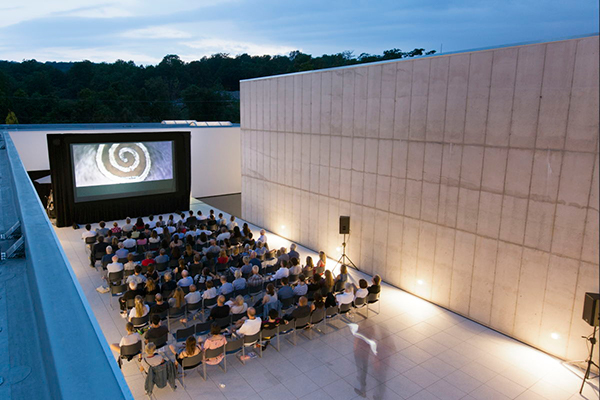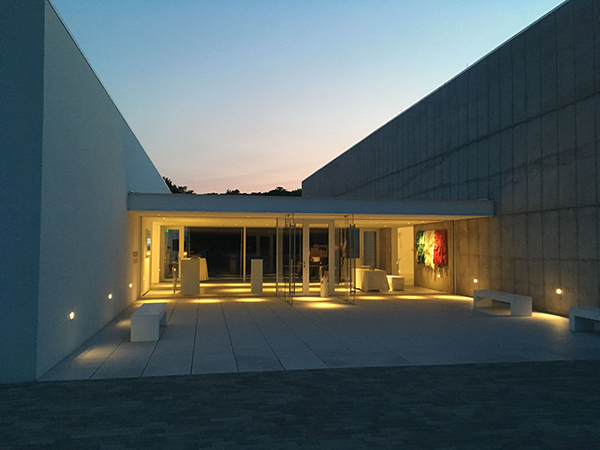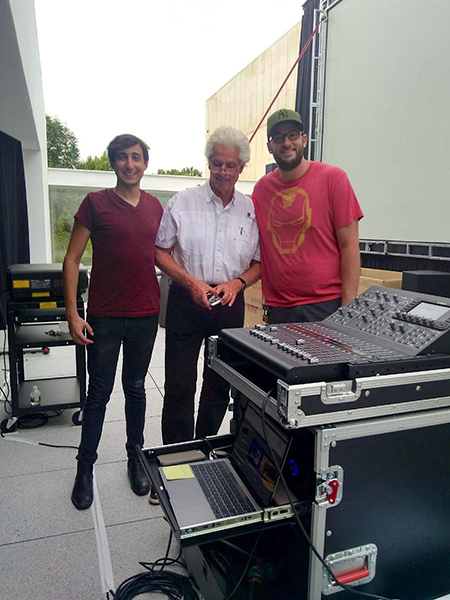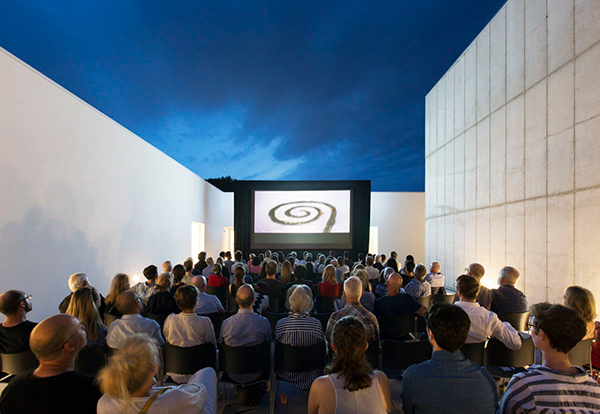With a modern art collection that had outgrown the collective capacity of their two homes, and unwilling to keep their larger works in storage, American art-collector Nancy Olnick and her Sardinia-born husband Giorgio Spanu found themselves contemplating a 14,000sq-ft steel and concrete former industrial warehouse (c1964) in Cold Spring, New York close to their weekend home in Garrison.
 Olnick and Spanu purchased the building for US$12m, and called on Spanish-born Architect Miguel Quismondo to create a spacious, light-filled gallery to do justice to their collection. Quismondo, in turn, brought Alberto Campo Baeza, another noted Spanish architect onboard to serve as Construction Manager and Project Liaison. Baeza had previously designed the Olnick/Spanu’s Garrison home. As well as accommodating for the 500-plus collection, the space was to allow a wider audience of art aficionados to enjoy them.
Olnick and Spanu purchased the building for US$12m, and called on Spanish-born Architect Miguel Quismondo to create a spacious, light-filled gallery to do justice to their collection. Quismondo, in turn, brought Alberto Campo Baeza, another noted Spanish architect onboard to serve as Construction Manager and Project Liaison. Baeza had previously designed the Olnick/Spanu’s Garrison home. As well as accommodating for the 500-plus collection, the space was to allow a wider audience of art aficionados to enjoy them.
As the project, now called the Magazzino Italian Art Gallery, neared completion, the mandate was expanded to include summer weekend International Art Film Screenings in the building’s 3,000sq-ft courtyard – which meant that its acoustic issues needed to be addressed.
The WSDG Walters-Storyk Design Group was engaged to recommend and integrate a complete tech package for the Magazzino Italian Art Gallery’s 2018 Summer Cinema screenings. Olnick and Spanu were introduced to WSDG and its founding partner, John Storyk by Jonathan Rose, a mutual friend from the Mid Hudson community who had worked with John years ago when WSDG were co-acousticians for NYC’s Jazz At Lincoln Center venue.
WSDG Project Manager Jonathan Bickoff reports that he and Storyk performed several site visits in the fall of 2017: ‘We immediately recognised the primary audio issues confronting the museum. The rectangular courtyard was constructed entirely of hard reflective surfaces. This presented a number of acoustic challenges which needed to be resolved,’ Bickoff explains. ‘We took extensive acoustic measurements which guided us in developing a strategy for the film festival audio and any additional music presentations the museum might want to consider.
 ‘As the project unfolded, Magazzino expanded the WSDG team’s original design mandate to include the entire film/video system, its implementation and initial deployment,’ Bickoff continues. ‘The system package features a 12ft high x 20ft wide Draper Truss-Style Cinefold screen framed by 2ft-wide Black Velour skirting; an Epson PowerLite Pro L1405u projector and V12H004U03 ShortThrow Lens, seven QSC E12 Passive Speakers and two QSC KW 181 Subwoofers. We worked closely with local pro audio-video supply firm Markertek to create the most efficient, reliable and cost-effective technical system, in a compact, easy to set-up and breakdown configuration. As it happened, the opening weekend Saturday evening screening was interrupted by an unanticipated thunderstorm. The system’s portability was demonstrated when it was disassembled and moved indoors in under ten minutes.’
‘As the project unfolded, Magazzino expanded the WSDG team’s original design mandate to include the entire film/video system, its implementation and initial deployment,’ Bickoff continues. ‘The system package features a 12ft high x 20ft wide Draper Truss-Style Cinefold screen framed by 2ft-wide Black Velour skirting; an Epson PowerLite Pro L1405u projector and V12H004U03 ShortThrow Lens, seven QSC E12 Passive Speakers and two QSC KW 181 Subwoofers. We worked closely with local pro audio-video supply firm Markertek to create the most efficient, reliable and cost-effective technical system, in a compact, easy to set-up and breakdown configuration. As it happened, the opening weekend Saturday evening screening was interrupted by an unanticipated thunderstorm. The system’s portability was demonstrated when it was disassembled and moved indoors in under ten minutes.’
The system’s flexibility was further confirmed the following week, when the entire evening’s presentation took place indoors, within one of the museum’s large exhibition spaces. In an additional surprise WSDG, learned that each of the unique art film videos was produced in a different format creating, extremely challenging presentation issues. The problem was resolved by having WSDG engineering specialist, David Molho mix each film live using the system’s remote audio mixing system.
‘The Magazzino Italian Art Gallery is an important new asset to our community, and we were privileged to have been invited to apply our expertise to their film presentation needs,’ John Storyk says. ‘Their extensive art collection features works by many brilliant contemporary Italian artists. Nancy and Giorgio have made an exceptional commitment to raising the awareness of these artists and the Cinema In Piazza screenings exemplify their expanding commitment to this initiative. Magazzino is a welcome addition to an extraordinary group of Hudson Valley Art Destinations that includes the Storm King Art Center and Dia: Beacon. We are extremely fortunate to have them as friends and neighbours.’

L-R: David Molho, John Storyk, Corbett Storyk











